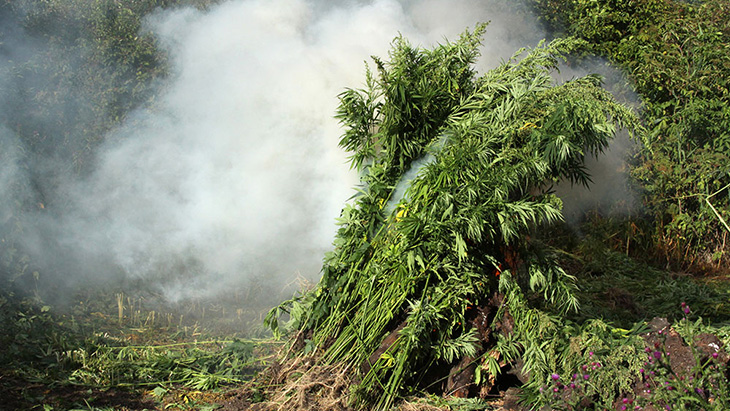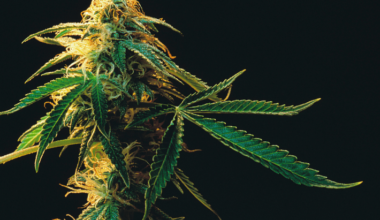
Federal law enforcement agents and their partners seized nearly 5.7 million cultivated marijuana plants in 2022, according to annual data compiled by the US Drug Enforcement Administration.
According to figures published in the DEA’s Domestic Cannabis Eradication/Suppression Program Statistical Report, agents and their partners confiscated approximately 5.7 million cultivated cannabis plants last year – a slight increase (three percent) over 2021’s total. Agents also reported confiscating nearly 37,000 THC-infused edible products and another 60,000 cannabis concentrates.
This is the highest annual seizure total reported by the agency since 2011. Cannabis-related seizures largely fell from 2012 to 2020, before increasing sharply in 2021.
As in past years, the overwhelming percentage of all DEA-related seizures (88 percent) and arrests (52 percent) took place in California. Despite adult-use cannabis being legal in the state, it continues to serve as the primary provider of unregulated cannabis throughout the United States. In addition, California’s high tax rates and municipal bans on cannabis retailers have made it difficult for the legal market to supplant the unregulated marijuana marketplace.
“California has always exported the majority of its marijuana crop out of state and the adoption of adult-use legalization in the Golden State has done little to change this fact,” acknowledged California NORML Coordinator Dale Gieringer. “Illegal marijuana cultivation will persist in California so long as there remains a substantial demand from other states and as long as interstate commerce remains prohibited by federal law.”
More than 4.9 million marijuana plants were confiscated in California, according to the report.
Law enforcement also reported confiscating large quantities of cultivated plants in Oklahoma (342,746), in Kentucky (184,295) and in West Virginia (50,301). The adult-use of cannabis remains prohibited in all three states.
“The reasons we are still seeing relatively high levels of marijuana eradication and interdiction are simple,” said NORML’s Political Director Morgan Fox. “Despite considerable state-level progress, more than half of all US states continue to ban regulated adult-use cannabis markets. Furthermore, the federal government overtaxes state-licensed cannabis businesses and makes it extremely difficult for them to access basic financial services so that they can better compete with unregulated operators.”
He added: “Spending billions of taxpayers’ dollars to enforce federal cannabis prohibition, putting law enforcement officers in unnecessary danger, and hampering the implementation and effectiveness of state-regulated markets are clearly not the answers to this issue. Rather, the federal and state governments should work toward furthering sensible policies that facilitate regulated cannabis markets and work to repair the harms caused by nearly a century of prohibition.”
Survey data from the United States and Canada have shown that legal markets can displace the unregulated cannabis market over time. According to data compiled earlier this month by New Frontier Data, most consumers residing in jurisdictions in the United States where the adult use of cannabis is legal now report obtaining their marijuana primarily from brick-and-mortal retailers. Data from Canada, which legalized retail cannabis sales in 2018, show a similar trend, with the percentage of consumers who reported obtaining cannabis from licensed providers having risen year over year.
DEA agents and their partners made far fewer cannabis-related arrests in 2022 as compared to the prior year. The agency reported making 5,061 marijuana-related arrests in 2022 as part of its DCE/SP activities, a 24 percent decline over the prior year’s totals (when agents reported 6,606 arrests).
Federal agents and their local partners also reported seizing $45 million in assets in 2021 as part of the program – a figure that is less than half the total number of assets seized in 2020 ($103 million).
The DCE/SP began funding eradication programs in Hawaii and California in 1979. Last year, 37 states participated in the program.
Related
Medical Disclaimer:
The information provided in these blog posts is intended for general informational and educational purposes only. It is not a substitute for professional medical advice, diagnosis, or treatment. Always seek the advice of your physician or other qualified healthcare provider with any questions you may have regarding a medical condition. The use of any information provided in these blog posts is solely at your own risk. The authors and the website do not recommend or endorse any specific products, treatments, or procedures mentioned. Reliance on any information in these blog posts is solely at your own discretion.






